When you purchase through links on our site, we may earn a commission. Here’s how it works.
I don’t need to tell you that the ocean tastes salty.
After all, they call it salt water for a reason.
Table of Contents
But did you know that fish need the ideal “saltiness” to survive?
If the salt levels are out of whack, you risk harming your fish.
And, you don’t want that!
You want the saltiness of your aquarium to match that of your fish’s natural environment.
While the perfect salt levels come naturally in the wild, your aquarium needs a human touch.
But how do you determine the ideal saltiness?
That’s where testing for salinity comes in.
And today, I am going to teach you everything there is to know about salinity.
What is salinity?

While the water in your aquarium may look clear, it actually contains dissolved ions – salts – that are invisible to the eye.
You can replicate this by taking a pinch of table salt and dissolving it in water. Even though the salt disappears, it remains in the water – which is obvious if you taste it.
If you then boil that water until it evaporates, a salt residue will be left behind. This residue is made up of the ions that were dissolved in the water.
It doesn’t matter if it’s seawater or fresh water, all natural water sources on Earth contain these dissolved ions in varying quantities – some ions exist in very high amounts while others are present in very low amounts.[1]
Seawater, for instance, is mostly made up of sodium (Na) and chloride (Cl) ions, among others. Together these two ions give seawater its “salty” taste and account for 85% of all dissolved ions in seawater.[2]
However, even ions that are only present in very low amounts can still be important to aquarium fish and plants.
Salinity is the measure of these dissolved ions.
How is aquarium salinity measured?
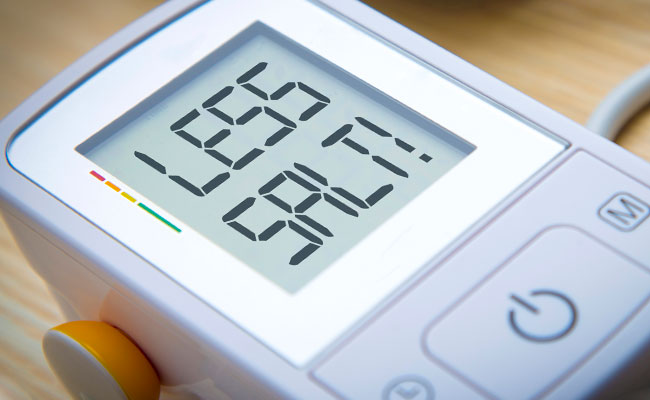
You will most commonly see salinity measured in parts per thousand (PPT or ‰).
This is the physical amount of salt in the water.
The generally accepted salinity of natural seawater is 35 PPT.
So, a result of 35 PPT would mean that there are 35 parts salt to every 1,000 parts of water.
To correctly measure the salinity, you need to take a precise weight of seawater, evaporate the water and measure the weight of the residue left behind.
Now as you might have guessed, this is an awful lot of work for the average hobbyist, who just wants to raise happy and healthy fish…
I know that if this is how I had to test the salinity of my tank, I would have thrown in the towel long ago. I don’t have time for that, do you?
That’s why fish keepers use indirect methods to measure salinity.
And here is where it gets a little bit confusing.
You see, the unit of measurement that is used when determining salinity entirely depends on the device used to measure it.
Refractometers and hydrometers measure the specific gravity (SG) or practical salinity scale (PSS or PSU) while salinity meters measure the conductivity in millisiemens per centimeter (mS/cm or mmho/cm).
To a beginner, this can all sound terribly confusing. And, I understand!
For now, all you really need to know is that each of these measurements can be used to determine the salinity of your aquarium.
What salinity is best for your aquarium?
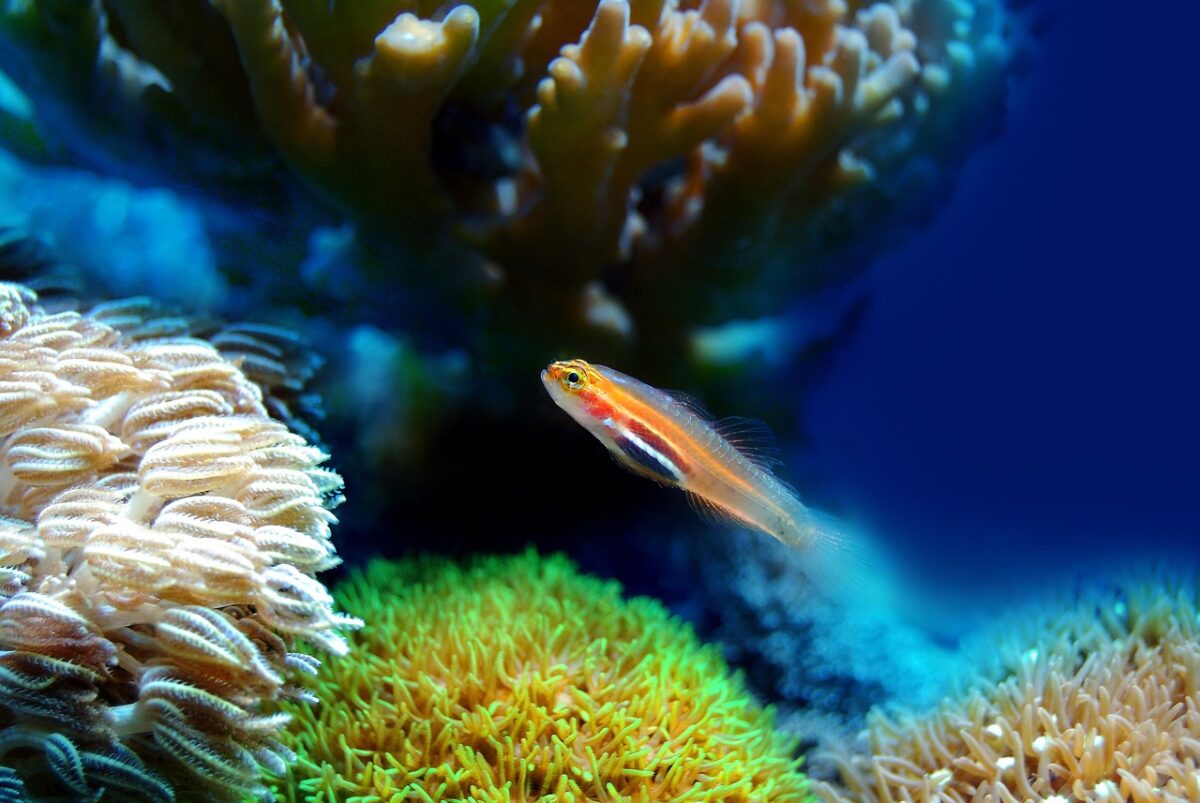
The ideal salinity for your aquarium is entirely determined by the fish and plants you want to add.[3]
The idea is to imitate the salinity found in the natural environment of the fish you keep.
Saltwater aquarium salinity: 35 PPT
Freshwater aquarium salinity: 0.5 PPT or less
Brackish aquarium salinity: 0.5 – 30 PPT, depending on fish
Why do you need to test the salinity of your aquarium?
It’s pretty simple – if the water salinity is too far out of your fish’s comfort zone, it can cause stress or even death.
How often should you check the salinity of your aquarium?

Like most fishkeeping chores, testing the salinity in your aquarium is not a once and done job.
I test the salinity in my tank every time I do a water change.
You know when you mix your salt (I use this) with pure fresh water?
If you add it to your tank without testing it, you risk throwing off the balance of your aquarium.
So before I add my saltwater mix to the tank, I test the salinity level of my mix and adjust it if needed.
The idea is to get the salinity as close to the salinity in your tank as possible, assuming the salinity of your tank is correct.
However, if you are cycling a new tank, I would recommend testing the salinity more frequently – just so you know that everything is going smoothly.
What causes the salinity in your tank to change?

1. Evaporation
Over time, the water in your tank will slowly evaporate.
Unless you mark the water level on your aquarium, you might not even notice it happening.
But while water evaporates, salts don’t.
What this means is that the water leaves your tank, but the salts are left behind.
With more salt and less water, the salinity of your tank will be higher.
2. Water changes and top-ups
The most common cause of fluctuating salinity levels is user error.
Either topping off the tank with too much fresh water or failing to test the water you add each water change can seriously mess with salinity levels.
3. Salt creep
You know that crusty salt buildup on the edge of your tank? Well, that is salt that is no longer dissolved in the water.
Over time, this loss of salt can lead to reduced salinity.
4. Other small stuff…
Protein skimmers, new specimens, removing plants and decorations all remove a tiny bit of salt from the water.
While it may not be much, it can add up over time.
How to test the salinity of your aquarium
There are three common tools that aquarists use to test the salinity of their tanks:
1. Hydrometer
If you want to measure the salinity of your tank, the cheapest way is with a hydrometer.
Seriously, you can pick one up for a couple of dollars.
A hydrometer tests for salinity by comparing the density of the water in your aquarium to the density of pure water – water without dissolved ions.[4]
While they are simple to use, my biggest gripe with hydrometers is that they are the least precise way to measure salinity, even when used correctly.
Since fish can adjust (to a degree) to changes in salinity, a hydrometer may very well be all you need to test salinity – just follow the instruction manual carefully.
But if your tank contains plants, corals and critters like sea stars that are highly sensitive to changes in salinity, then I recommend skipping this option.
2. Refractometer
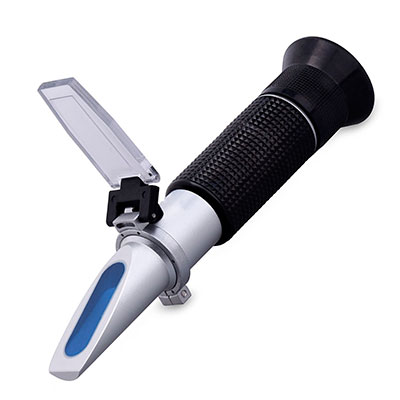
Refractometers are by far the most popular way to measure salinity among beginners and experts alike.
Not only are they accurate, but they are also affordable, making them the best value for the money when you want to measure salinity.
Refractometers measure the way light bends through the water to determine salinity.
Analog refractometers require a bit of tweaking to get precise measurements, but not so much that a beginner can’t figure it out.
Fortunately, there are digital options available for those who want to pay a bit more for an easier-to-use device.
Want to know more? Check out our detailed refractometer guide.
3. Salinity monitor
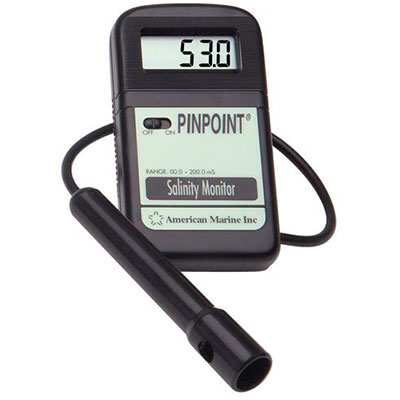
Rounding out the salinity measuring devices are salinity meters.
These range from small pen testers and handheld units for occasional salinity tests to automated systems that continuously monitor the salinity and alert you if it is above or below your preferred level.
Salinity meters meters use a probe to test conductivity of the water. To put it simply, the probe records how the water reacts to electricity and uses this reading to determine the salinity of the water.
While salinity meters are easy to use, they are usually more expensive and harder to find than other salinity measuring devices – you likely won’t find one on the shelf of your local fish store.
Crafting the Perfect Saltwater for Your Marine Aquarium

Embarking on the journey of setting up a saltwater or marine aquarium? A crucial step is mastering the art of creating the right saltwater mix. This isn’t just about any saltwater, but one that precisely matches the marine salinity needed for your aquatic environment. Let’s walk through these easy steps to get it just right.
1. Choosing the Right Salt Mix
The market is flooded with different salt mixes, like the popular Red Sea Coral Pro Salt. But the key is finding the one that suits your tank’s needs. For example, if you’re setting up a reef tank, you’ll want a reef mix that provides the correct levels of alkalinity and calcium, essential for the health of your corals and other marine inhabitants.
2. Preparing the Base: Fresh Water
It might be tempting to use tap water, but I’d advise against it. Tap water contains impurities that can harm your tank’s delicate ecosystem. Instead, opt for well-purified RO-DI (Reverse Osmosis Deionized) water. You can usually pick this up at your local aquarium store, ensuring a safe and clean starting point for your saltwater mix.
3. Mixing: The Key Step
Now, take your chosen salt mix and blend it into the fresh RO-DI water. A pump works great for this, ensuring even mixing. Keep stirring until the salt completely dissolves – you’ll know you’re done when the water turns crystal clear.
4. Testing: Getting the Salinity Just Right
With your saltwater concoction ready, it’s testing time. You’re aiming for a specific gravity range of 1.023 to 1.028 for reef tanks, or 34 to 36 PPT if you’re measuring parts per thousand. If your readings fall below these ranges, the solution is simple: add a bit more salt, stir until dissolved, and test again.
Calibrating Your Tools for Accurate Measurements
Accuracy in measuring devices, like hydrometers and refractometers, is crucial. Here’s how to ensure they’re calibrated correctly:
- Hydrometer: First, rinse it and the beaker with distilled water to remove any residues that could skew your readings. Fill the beaker with distilled water at the required temperature, then submerge the hydrometer. Ensure it floats freely without touching the beaker’s sides. If the reading is off zero, adjust and repeat until you consistently hit the mark.
- Refractometer: Start by maintaining the device at 20°C for about 30 minutes. Clean its glass screen thoroughly. Place the correct amount of calibration fluid to cover the screen and close the lid. Look through the eyepiece and note the reading. Adjust the refractometer if it’s not showing 34 to 36 PPT. Clean and repeat until you consistently get the right readings.
Remember, the goal is to replicate the natural ocean environment as closely as possible. By following these steps and ensuring your measuring tools are accurate, you’re well on your way to creating a thriving saltwater habitat.
Aquarium Salinity Conversion Table
Want to convert salinity to specific gravity or conductivity readings? I’ve got you!
Simply use the chart below that covers the ideal range for marine tank salinity.[5]
Reference temperature – 25.0°C / 77.0°F
| Salinity (PPT/PSU) | Specific Gravity (SG) | Conductivity (mS/cm or mmho/cm) |
|---|---|---|
| 33.5 | 1.0252 | 51.0 |
| 33.8 | 1.0254 | 51.5 |
| 34.2 | 1.0258 | 52.0 |
| 34.6 | 1.0261 | 52.5 |
| 35 | 1.0264 | 53.0 |
| 35.3 | 1.0266 | 53.5 |
| 35.7 | 1.0269 | 54.0 |
| 36.1 | 1.0272 | 54.5 |
| 36.4 | 1.0274 | 55.0 |
Conclusion
As you see, salinity is an unusual variable to test for. Not only can it be measured in many different ways but also with many different tools.
However, when it comes to salinity, one thing remains constant – the importance of regular testing, for your fish’s sake.
How do you measure the salinity in your tank? Let me know in the comments below!
Note: PPT is the old measurement of salinity. Salinity is now measured as a dimensionless unit (S). However, I felt the inclusion and explanation of this fact would needlessly complicate an article aimed at beginners, especially given that many salinity measuring devices still include PPT in their scale.
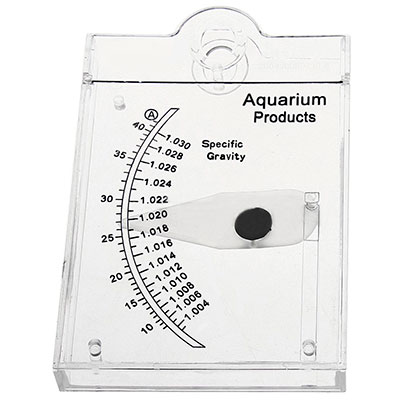
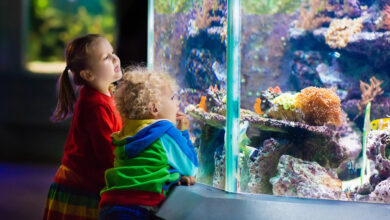
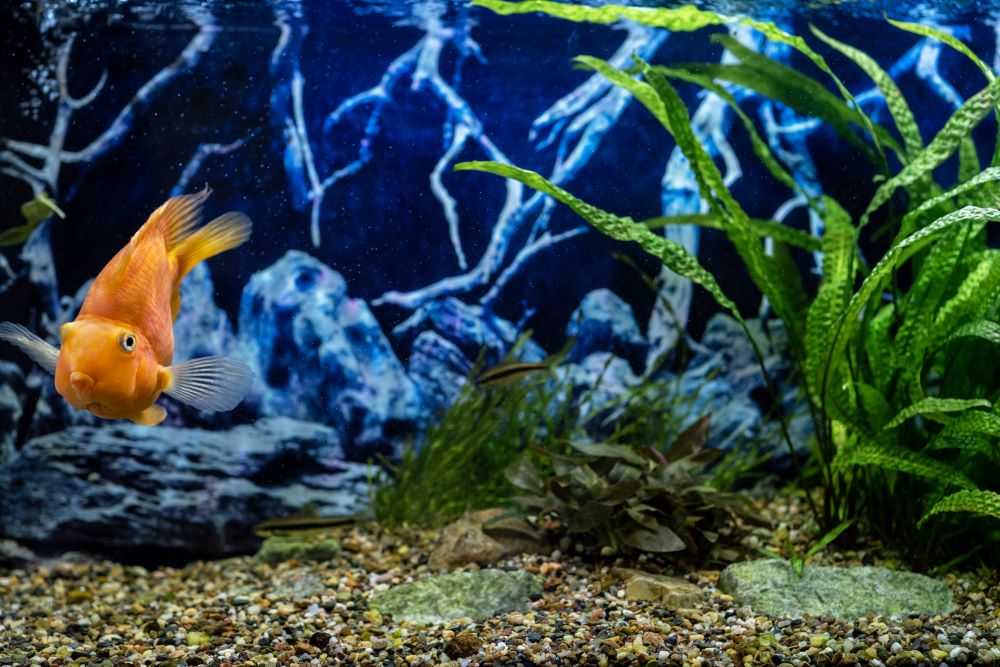
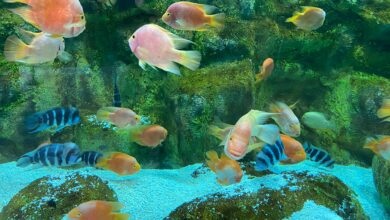

I have an Apex probe. I check the probe accuracy with a hydrometer. So far, they match
Hi Michael,
That’s good to know. Being able to accurately measure salinity is a vital part of keeping a healthy saltwater tank.
I go with the Apex probe and once a week during water changes, double check with a refractometer to ensure the probe isn’t drifting. When the refractometer and apex probe differ, check with 35 ppt solution on the refractometer and usually it is the one that needs adjustment, haven’t had to calibrate the apex probe, it’s rock solid so far!
Hi Kelvin,
That sounds like a good system for double checking accuracy. Thanks for sharing!